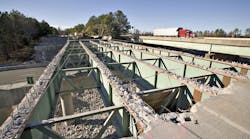U.S. transportation needs – particularly in terms of funding – may turn out to be the biggest winner of the 2014 midterm election cycle, according to analysis by several groups.
Post-election analysis conducted by the Transportation Investment Advocacy Center within the American Road & Transportation Builders Association (ARBTA) found that voters the country approved 60 out of 90 transportation-related initiatives on the ballot Nov. 44 – a passage rate of 67% for measures that will provide nearly $21 billion in additional in revenue for transportation projects.
“These election results show, once again, the public wants our government to invest in our mobility and safety and are willing to pay for it,” Pete Ruane, ARTBA’s president & CEO, said in a statement.
At the state level, ARBTA several big-ticket transportation referendums passed muster with voters:
- Texas redirected nearly $1.2 billion in oil and gas revenues from the state’s rainy day fund for transportation.
- Voters in Maryland (81%) and Wisconsin (80%) overwhelmingly approved measures to ensure that transportation-related revenues are used exclusively. for their intended purpose, and not diverted to non-transportation programs.
- With support of 60% of voters, Rhode Island voters also approved a statewide $35 million bond proposal.
In Louisiana, however, ARBTA noted that voters rejected a proposal to approve creation of a state constitutional amendment establishing a state infrastructure bank. Voters in Massachusetts also decided the scrap the connection between the state tax on both diesel and gasoline to the Consumer Price Index (CPI).
The group also tallied how multiple transportation initiatives on county and local ballots fared on Election Day this week:
- 20 out of the 32 measures (63%) to increase a gasoline or general sales tax for transportation investment were approved.
- 13 of the 14 measures (93%) to issue local bonds for transportation investment were approved.
- 23 of the 35 measures (66%) to increase property taxes for transportation investment were approved.
Yet Sean Slone, program manager for transportation policy at the Council of State Governments (CSG), cautioned against reading too much into the success rate of many transportation initiatives this election cycle.
“I think city and county transportation ballot measures have always had a history of success in some states and that has largely been a factor of them being highly localized and project specific,” he told Fleet Owner.
Indeed, ARBTA’s figures highlight that historical trend as voters approved ballot measures to increase transportation revenues on average 72% of the time over the last decade.
“If you can tell taxpayers what they are getting for their money in their community, you have a greater chance of success than you do convincing the rural farmer to help subsidize public transit in the big city that he’ll never use,” CSG’s Sloane pointed out.
As for the success of so many statewide transportation-focused ballot measures this year, he thinks they were largely about things other than a realization among the public of the need for additional transportation funding.
“I think that ballot measure to nix indexing [in Massachusetts] was one way voters this year expressed that they at least want more transparency and accountability when it comes to state government and how transportation is funded going forward,” Sloane explained.
“The success of the lockbox efforts in Maryland and Wisconsin were another extension of that thinking,” he added. “Voters want to believe that if they’re told they’re going to pay more in taxes to fund transportation, that money is actually going to transportation and that it won’t be raided to fund some other budget need.”
Jim Tymon, COO and director of policy and management for the American Association of State Highway and Transportation (AASHTO), stressed, too, that such state and local transportation referendums should not be viewed as efforts to ultimately replacement the need for funding from the federal government.
“We need to be very careful here because those initiatives are all about keeping up with the needs of our transportation infrastructure alongside the federal stream – not to be a substitute for it,” he told Fleet Owner. “The states and localities are doing these things to help keep their roadways up and running.”



